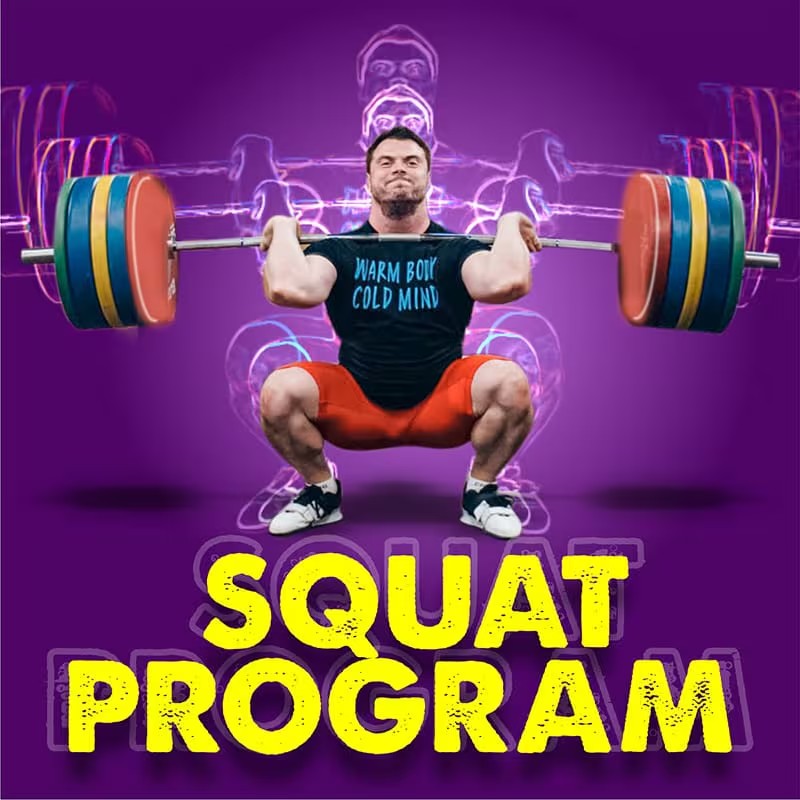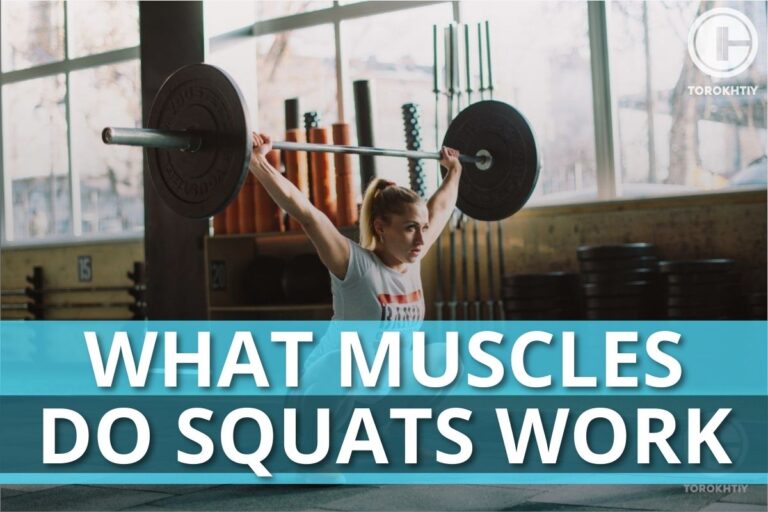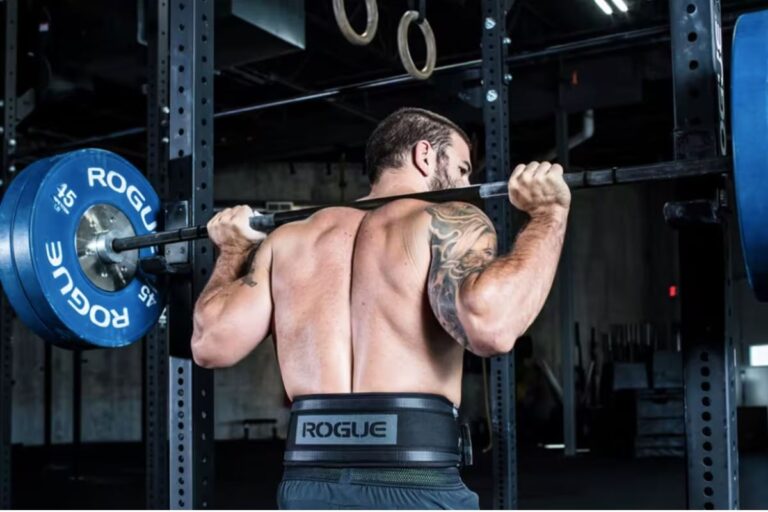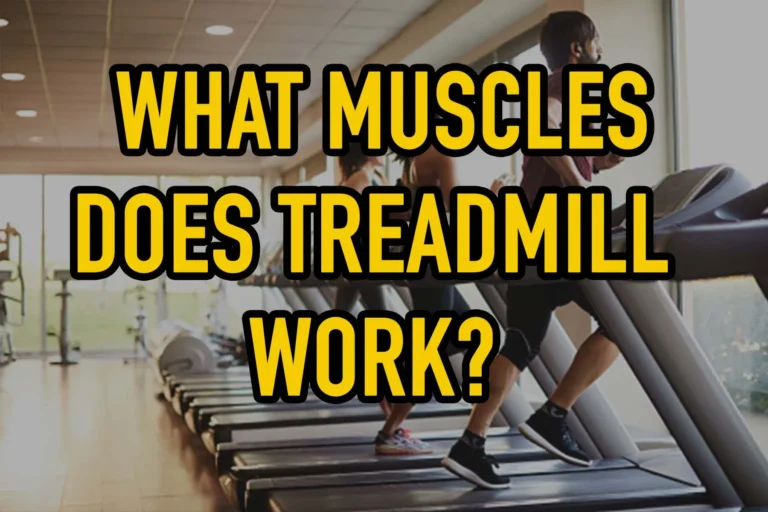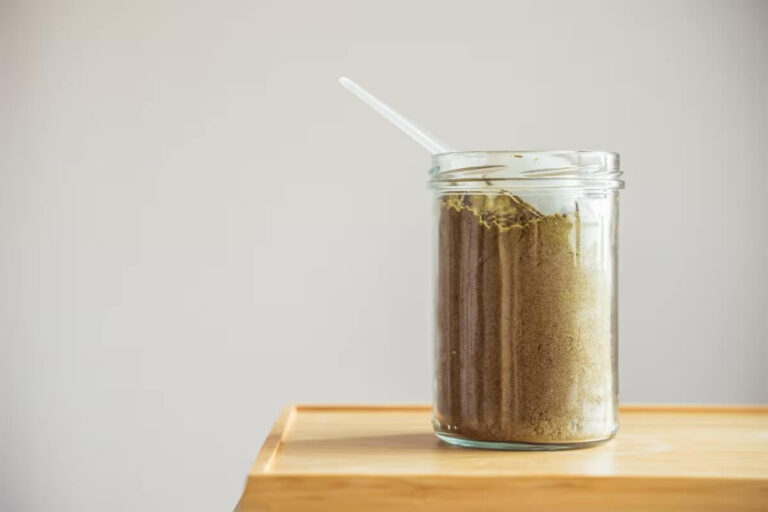Squat or Deadlift First: What Is the Ideal Sequence?
Just when you think you know all there is to know (or at least the majority of it) about strength training, some article pops up somewhere and tells you that the order in which you do your exercises is important, too. Who knew that whether you squat or deadlift first makes any difference?
It might seem trivial and hard to believe, but it’s true – the exercise you start your workout with will affect your entire session, and possibly your results. Don’t mistake this for choosing one over the other or claiming that squats are better than deadlifts or vice versa.
You still want to do both, but perhaps you need to stick to doing squats and then deadlifts. Or… Maybe you need to start with deadlifts?
This article won’t give you a definite answer on what you need to do first because, as it is with almost everything in fitness, that will depend on you, neither is better in general. In the end, it’s you who will make a decision, and we’ll just give you the tools to get to it.
Is it better to squat or deadlift first? That’s a decision only you can make, so think about what’s your main goal when it comes to strength training and making improvements. If your priority is working on your squats, then do that first. For muscle building, order doesn’t matter that much.
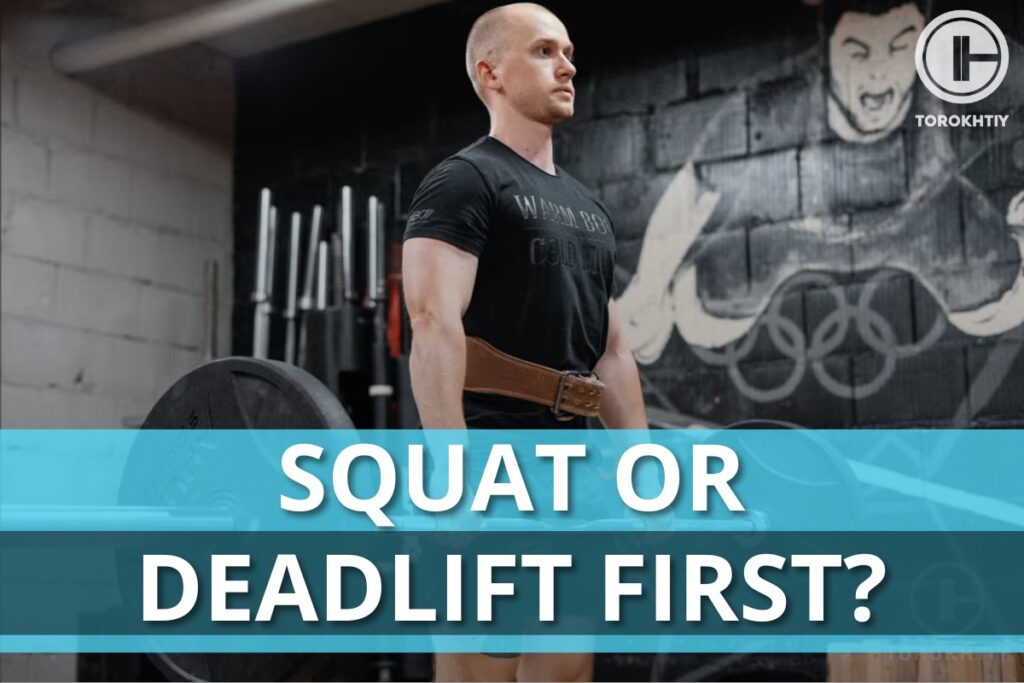
Deadlift and Squat: Description and Performance Features
Both of these are fundamental compound exercises that play a big role in strength training and just fitness in general. The deadlift mostly focuses on the muscles in the lower back, glutes, hamstrings (whole posterior chain), and core.
To do a deadlift, you lift a barbell from the ground to a standing position, all the while making sure you do it with correct form because that’s the key to preventing injuries, especially since deadlifts can cause lower back pain when done without correct form.
On the other hand, the squat (depending on a squat type of course) pays most attention to your thighs, hips, and buttocks. It’s a demanding exercise that you do by bending the knees and hips, and then you lower yourself in a seated position before standing back up. Both squats and deadlifts engage several muscle groups at the same time.
If you mess up your form, you’re at higher risk of injury whatever you do, so make sure to get that down first before trying to lift really heavy weights. In the deadlift, you need to keep your spine in a neutral position to protect your lower back.
You start with moving the hips back a bit and leaning forward with your chest. You then grab the bar with your hands being shoulder-width apart and lift it as you straighten your hips and knees. The bar should be close to the body throughout the entire lift, and your core needs to be engaged.
Proper form is important for squats, too, because squatting can put a lot of stress on your knees and lower back if you don’t do it properly. Keep your feet shoulder-width apart, and as you lower yourself into a squat, the knees should track over the toes. Remember to keep your chest up and your back straight.
The depth can vary, but you should aim for at least a parallel position with the thighs parallel to the ground. If you can go lower, that’s great, but don’t push yourself too far before you’re ready for it.
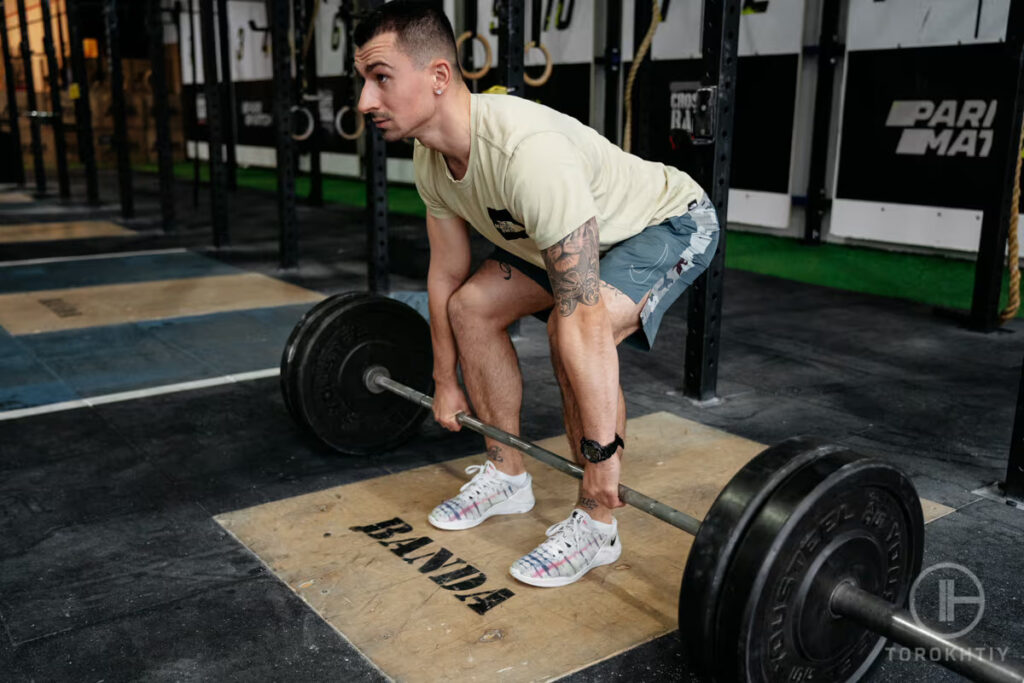
Should You Squat and Deadlift On the Same Day?
It’s not as simple as a yes-or-no answer because whether you should do both on the same day depends on what kind of results you’re going after, type of training method you are using and, of course, your physical condition.
Keep in mind that both of these exercises are anything but easy and they need a lot of energy and effort. Some people like combining squats and deadlifts in the same training session because your workout ends up being more comprehensive, and it’s time-efficient.
But doing movements that are this intense one after the other can strain your central nervous system and even injure you if the intensity and volume are too high.
If you don’t want to risk it, you can spread deadlifts and squats across different days. It won’t be as time efficient, but you’ll have the chance to give more focused attention to each movement, which might help with recovery and performance.
This approach is a must for beginners because they first need to learn how to maintain proper form and increase the amount of weight they’re lifting over time, little by little.
Tips From the Champ
You can’t overestimate the importance of proper form, and core stability is very important for it – in both squats and deadlifts. Do exercises like twists and planks to reinforce your midsection. It will improve your ability to generate force and power during all compound movements.
Olympic Weightlifting Champion
Deadlift Or Squat Which Comes First: 3 Factors of Choice
Your strength training routine is all about the workouts you do, but the order in which you do them matters, as well. Should you do deadlifts before or after squats, or maybe it should be the other way around?
This is different for everyone, and some people won’t even do squats and deadlifts on the same day. But if you give it a try and you’re trying to decide whether to deadlift or squat first, keep reading.
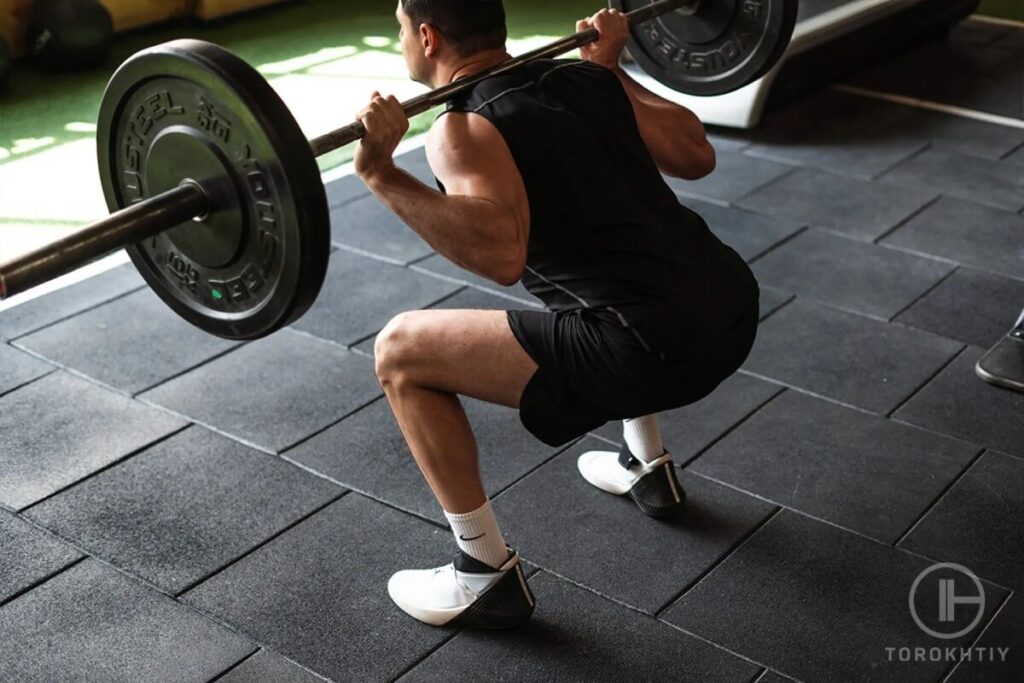
1. Personal Strengths and Weaknesses
If you want to make the right choice on which exercise to do first, ask yourself, what are your strengths and weaknesses? If one is harder to do than the other, you might want to start with the more challenging one.
The same goes for situations when you want to work on specific muscle groups. For example, if you want to work on your lower back and strengthen it, start with deadlifts.
The main idea would be to start with one that you want to improve more than the other, or to start with the one that should be improved more because it’s relatively weaker than the other.
2. Energy Levels and listening to your body
The idea here will be simply to listen to your body and make informed decisions. If you feel that you didn’t recover for example from the last back session, or your grip might need an extra day, or simply you don’t feel ready for heavy deadlifts today, you might want to leave them for later and reduce weight.
Or maybe you don’t feel like you want to put the bar on your back today, or there is no one to spot you… go for a deadlift and choose some “easier” weight/type of squat later.
🔻12-Week Deadlift Strength Program by Oleksiy Torokhtiy
Unlock your true potential with our Deadlift Strength Program!
Designed for athletes by 2-time Olympian Oleksiy Torokhtiy, this 12-week program focuses on enhancing your deadlift strength, strengthening your back and legs.
Program details:
- 12 weeks;
- 3 days / week;
- 45-120 minutes per session;
- 50+ specific exercises;
- Focus on New Result in Deadlift;
- One-time payment, no recuring payments;
- Full access to all training content.
Start now and boost your deadlift results!
If you’re set on doing both in the same session, make sure to adjust the weight on the second exercise based on how much energy you have and how fatigued you are because you don’t want to overexert yourself.
If you want to improve general strength and muscle mass be sure that one day you start with squats and next week you start with deadlift.
3. Training Goals
When it comes to structuring your workout, think about what your goal is. If you want to improve your squat game, then start with squats to focus a bit more on your quads (and major muscles in your legs in general) and improve the squat strength and power.
But if you’re more concerned with deadlifts and pull improvements, start with them to better engage and strengthen the posterior chain (including your lower back, glutes, hamstrings, and core). You can but don’t need to do both in the same session to get a comprehensive strength training; alternate between them on different lower body days.
For muscle building, the exercise you choose is not as important (to a degree of course:) ) as the way you do it – your progress depends on technique and application.
Tips From the Champ
Switch it up from time to time, preferably every 4-6 weeks, and alternate the order in which you do squats and deadlifts. The variation will challenge your muscles in different ways, which will result in a comprehensive strength-training routine.
Olympic Weightlifting Champion
Benefits of Doing Squats First
Squat before or after deadlift? If you’ve come this far, you know the only answer is – it depends. But apart from all the things you need to think about when making this decision, knowing the benefits of doing one before the other might tip the scale.
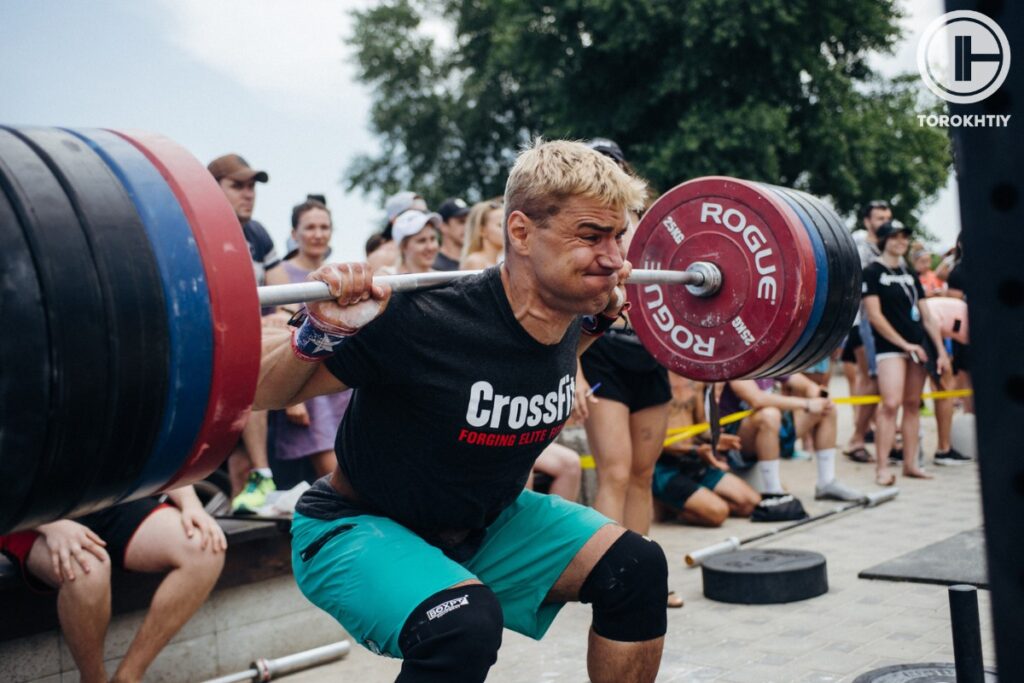
Squats are a fantastic way to prime your lower body and engage multiple muscles at once, so if you do them first, you will activate and stimulate your quads, hamstrings, and glutes. It will also increase the blood flow to these muscles.
Basically starting with squats will be optimal for developing stronger squats. They usually need more knee flexion than deadlift, so if that’s something you look for – go for it.
Another great thing about squats is that they need your core to be stable, so they will help activate and strengthen the muscles around your midsection, which will then make it easier for you to keep your form correct.
Capitalizing on your peak energy levels is yet another benefit of starting with squats. If you do squats right at the start of your training session, you’ll do them with optimal intensity and focus and set a positive tone for the rest of your session.
🔻12 Week Squat Program by Oleksiy Torokhtiy
Do you want to double your squat strength? In just 12 weeks, you’ll be able to boost your squat results.
This program transforms any ordinary squat into a powerful athletic movement.
What’s included:
- 12 weeks of squat programming;
- Effective combination of sets, reps, and weights;
- Fully designed and coached by Oleksiy Torokhtiy;
- Over 60+ movements, banded work, and weight training;
- Accessory work for core, joint stability and injury prevention;
- Max out on back squat and front squat at the end.
Start now and boost your squat results!
Benefits of Doing Deadlifts First
Before you set your mind on starting with squats, take a few moments to see what starting with deadlifts can do for you because it might change your mind.
Usually, your energy levels are at their highest right at the beginning of your workout, so starting with something super challenging is a good idea because you’ll be able to lift heavier weights while maintaining correct form.
In all honesty, squats will do this exact same thing, but if you get the most challenging workout out of the way, then the hardest part of your workout is done, and you know that everything that comes next will be easier.
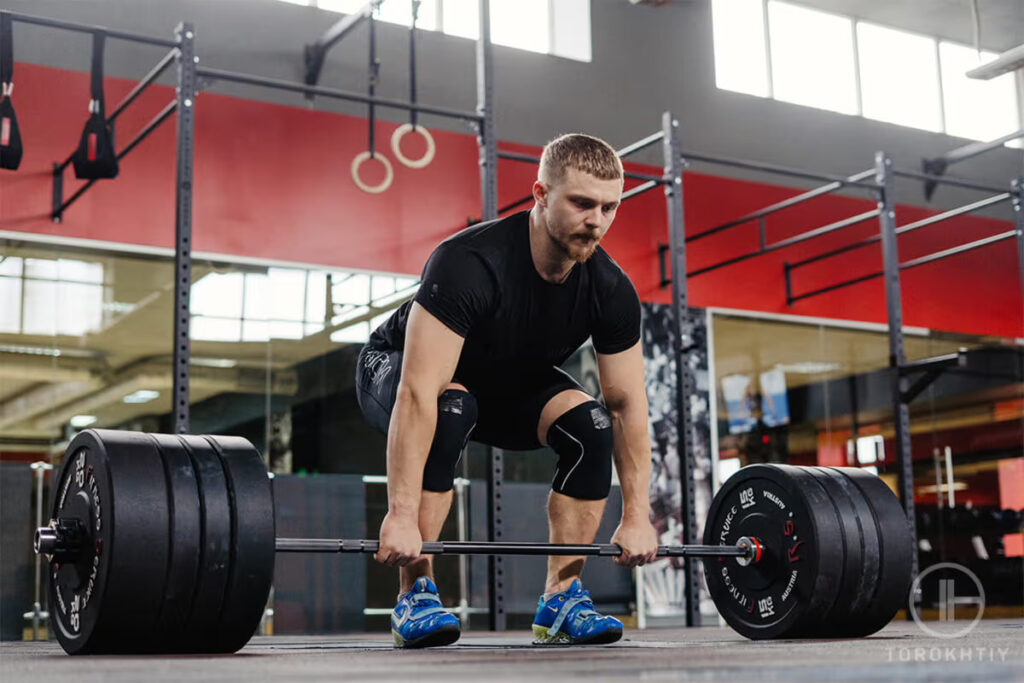
However, just like with squats, what you start with depends on what your priority is. If you’re set on improving your deadlift, posterior chain and grip, start with deadlifts. If your goal is just to get bigger, then what you start your session with doesn’t really matter, all that’s important is that you do both with proper form.
Balance plays a bigger part than the exercise you do first.
Your core is another group of muscles that will be engaged during deadlifts, and this will improve stability and balance. It will also establish a sturdy foundation for the next exercise on your schedule.
In the end – it all depends on what your priorities are and what you hope to gain out of your workout. Neither of these exercises is a bad way to start, there’s only nuances that make some people prefer one over the other.
FAQ
Should I prioritize deadlift or squat?
That depends on you and your goals. Deadlifts are better first if you are after developing strength and the posterior chain in deadlift. But if your squat strength is more important, then you want to do first squats then deadlifts, or perform them on a separate day.
How long should I wait between squats and deadlifts?
Rest for 2 to 5 minutes between sets that are focused on strength, but if you want to emphasize endurance and hypertrophy (and if your session wasn’t extremely intense), you can rest for only 1 to 2 minutes between exercises. The key is to listen to your body and rest accordingly.
Conclusion
It might seem like there’s a whole science behind this, but in reality, what you start your workout with depends mostly on you – your goals.
Whether you squat before or after deadlift doesn’t make that much of a difference in the grand scheme of things; what’s important is that you work out and that you include both squats and deadlifts in your routine. Why settle for one when you can do both, right?
What do you start your workouts with? Do you notice a big difference when you start your workout with squats as opposed to when you start it with deadlifts? Which of these two powerhouses do you prefer and why?
Let’s see what you have to say, and as always, share any tips and opinions with us!
Make your choice!
References:
- Clifton J. Holmes “Understanding the deadlift and its variations,” ACSM’s Health & Fitness Journal 24, no. 3 (January 2019).
- David Bautista, Dustin Durke, Joshua A. Cotter, Kurt A. Escobar, Evan E. Schick “A Comparison of Muscle Activation Among the Front Squat, Overhead Squat, Back Extension and Plank,” International Journal of Exercise Science 13, no. 1 (2020): 714-722.
- Federico Nigro, Sandro Bartolomei “A Comparison Between the Squat and the Deadlift for Lower Body Strength and Power Training,” Journal of Human Kinetics 73 (2020): 145-152.
- Health Promotion Board (HPB) “Prevent Injuries with Proper Form During Workouts,” Singapore University Health Center, https://www.nus.edu.sg/uhc/articles/details/prevent-injuries-with-proper-form-during-workouts (accessed February 20th, 2024)
- Kate Neudecker “Learn How to Do Front Squats to Fire up Your Quads and Light up Your Core,” https://www.menshealth.com/uk/how-tos/a735538/front-squat/ (accessed February 20th, 2024)
- All photos are made by our Torokhtiy Media Team
Why Trust Us?
With over 20 years in Olympic Weightlifting, our team does its best to provide the audience with ultimate support and meet the needs and requirements of advanced athletes and professional lifters, as well as people who strive to open new opportunities and develop their physical capabilities with us.
By trusting the recommendations of our certified experts in coaching, nutrition, dietology, and sports training programming, as well as scientific consultants, and physiotherapists, we provide you with thorough, well-considered, and scientifically proven content. All the information given in the articles concerning workout programming, separate exercises, and athletic performance, in general, is based on verified data. We ensure that you can rely on our professionals’ pieces of advice and recommendations that can be treated as personalized ones which will benefit you and fully meet your needs.
The product testing process is described in more detail here
Author: Jacek Szymanowski
Certified Nutritionist,
M.Sc.Eng. Biotechnology
Performance Architect,
Strength and Conditioning Specialist
With over 30 years of fighting experience, specialization in nutrition coaching for athletes, and expertise in metabolic health and dietary strategies, Jacek offers a comprehensive approach to optimizing your performance and well-being. Backed by a Master of Science degree in Biotechnology, Jacek remains at the forefront of scientific advancements, ensuring that his coaching is always evidence-based and up-to-date.



